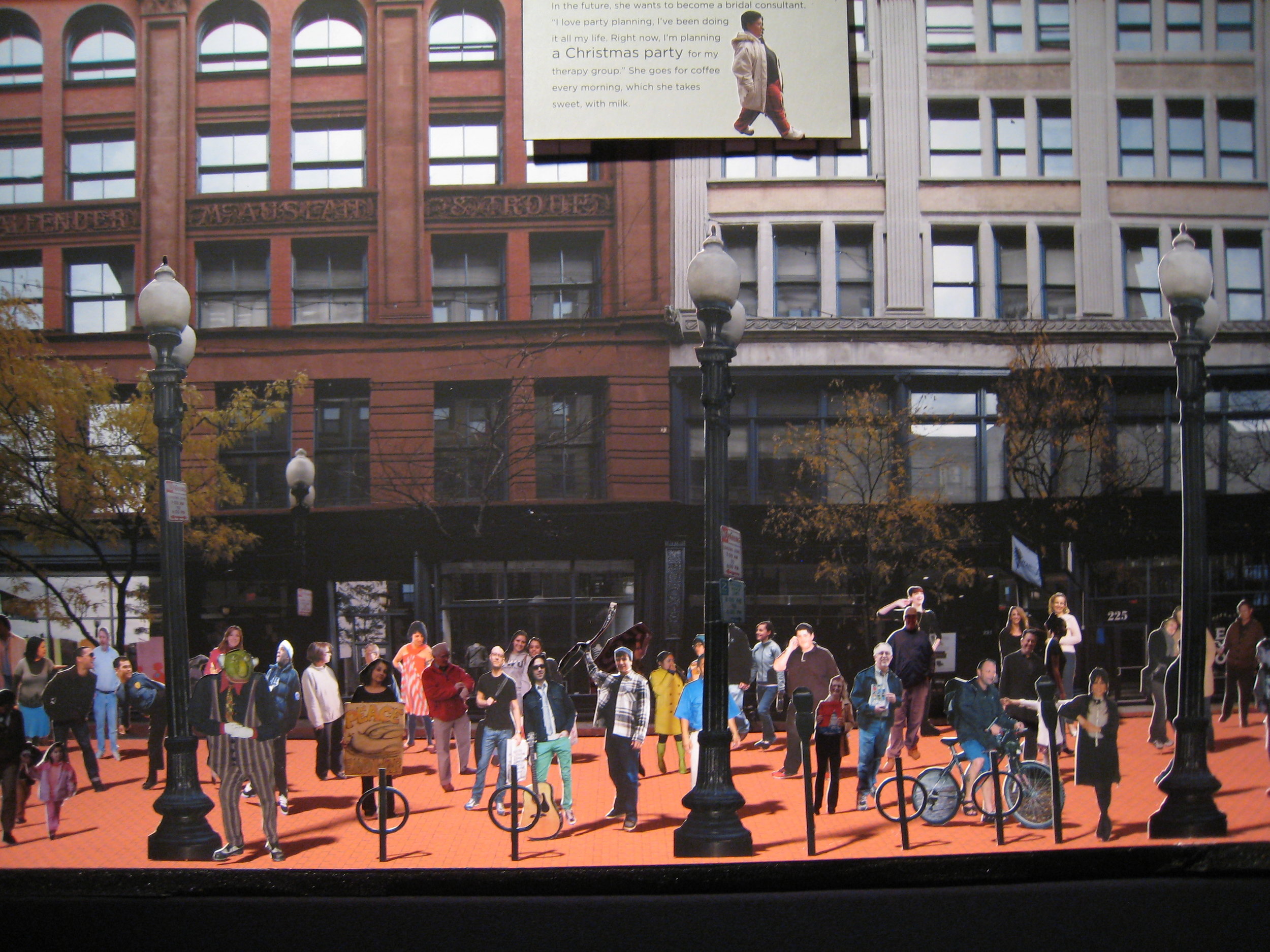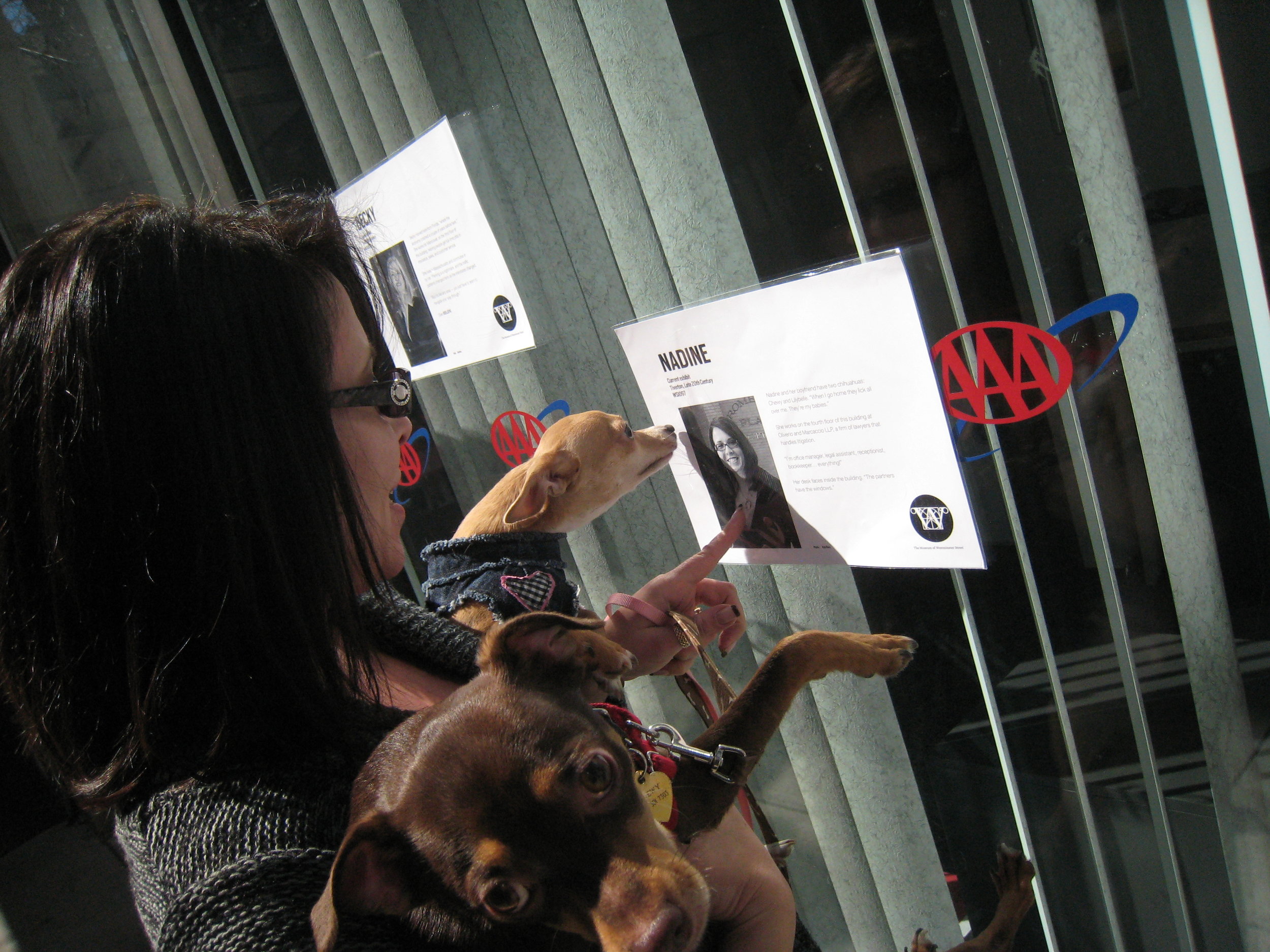The Museum On Site
The Museum On Site (TMOS) is dedicated to helping people understand their worlds through free, site- and community-specific experiences that take place in spaces where people already are.
Co-founded in 2008 by Dr. Lyra D. Monteiro and Andrew Losowsky, TMOS draws on the techniques of theater, museums, academic research, participatory ritual, advertising, performance art, and creative protest to create work that reveals the oppressive structures that are built into the routines, interactions, and landscapes of everyday life. Although the experiences we create are ephemeral, TMOS is committed to documenting, evaluating, and reflecting upon our work at every stage; and to sharing our projects with others who could not experience them in person, through books, videos, websites, exhibitions, and lectures.
TMOS is currently directed by Dr. Monteiro, who teaches undergraduate and graduate courses in public history, African American history, social justice, and cultural studies at Rutgers University-Newark.
Among other new projects, we are currently developing a major intervention for New York City’s Pride Month (every June), titled “Ghosts of Pride,” which aims to contextualize the month’s celebrations by highlighting historical sites of queer trauma in all five boroughs.
Below are examples of TMOS projects prior to Washington’s Next!
A Thousand Ships: A Ritual of Remembrance Marking the Bicentennial of the Abolition of the Transatlantic Slave Trade (2008)
A Thousand Ships was created by TMOS and Barnaby Evans, the creator of WaterFire, and took place in downtown Providence, Rhode Island, during a WaterFire lighting on October 2, 2008. In collaboration with a dozen location organizations, we created a series of collective rituals and performances that encouraged emotional engagement with the historical involvement of Rhode Island in the Transatlantic Slave Trade; visualized and visceralized the number one thousand—which is the approximate number of slave ship voyages known to have left the colony (and later, state) to trade Rhode Island rum for captives on the West African coast; vocalized the words of Rhode Islanders involved in the trade—and those enslaved in Rhode Island; and honored those whose lives were destroyed by ships who had once anchored in the same river on which the festival now takes place.
A Thousand Ships was documented in a book by the same name, which featured photographs and excerpts from interviews with participants in the event; along with all of the historical texts that were performed, and essays by Evans, Dr. Monteiro and Professor James T. Campbell of Stanford University, the author of the original report of Brown University’s “Slavery and Justice” Commission. The book was distributed to dozens of public and academic libraries around the State of Rhode Island, thanks to funding from the Rhode Island Council for the Humanities. The hardcopy is available for purchase here; and the book can also be downloaded as a free PDF here.
Westminster Stories (2009-2010)
Westminster Stories was presented as part of “Providence Art Windows," a long-running juried art show that converts unused storefronts into spaces for art. Over the course of several weeks, TMOS interviewed and photographed over a hundred people who lived, worked, or patronized the businesses on two blocks of Westminster Street, one of the most populated areas of Downtown Providence. We created dioramas of each block—complete with parking meters and pigeons—along with all of the people we had spoken with. Every week, we highlighted snippits of our interviews with the people featured in the window, focused around themes ranging from “Coffee” and “Shopping” to “Discrimination.”
Westminster Stories was documented on a website (archived here), which includes full versions of selected interviews. All of the interviews and photographs are also archived at the Rhode Island Historical Society.
The Museum of Westminster Street (2010)
Whereas Westminster Stories miniaturized two blocks of the street, The Museum of Westminster Street turned the street into a pop-up museum about itself, complete with hundreds of museum-style labels documenting the past and present of the people, buildings, and objects that made up the street. It took place on a Friday and a Saturday, in order to catch two of the major communities who use the street: downtown workers on their lunch breaks, and people from throughout the city who come downtown to eat brunch and shop on the weekends. The Museum of Westminster Street challenged ideas of what kinds of things are worthy of museum-level attention and respect, and invited everyone who entered the two blocks of the “museum” to wear stickers or even write their own labels about themselves as “current exhibits” within the museum.
A short video documenting The Museum of Westminster Street can be viewed here.


